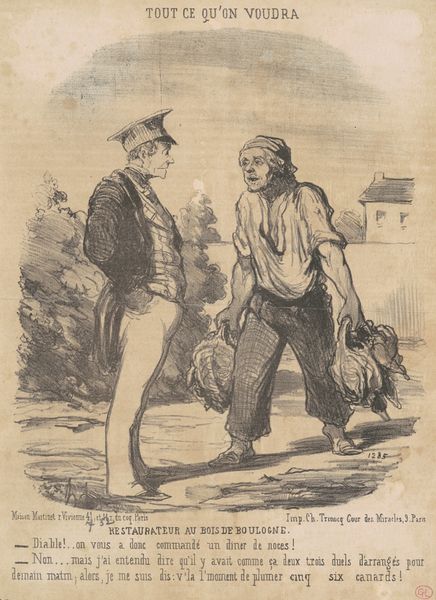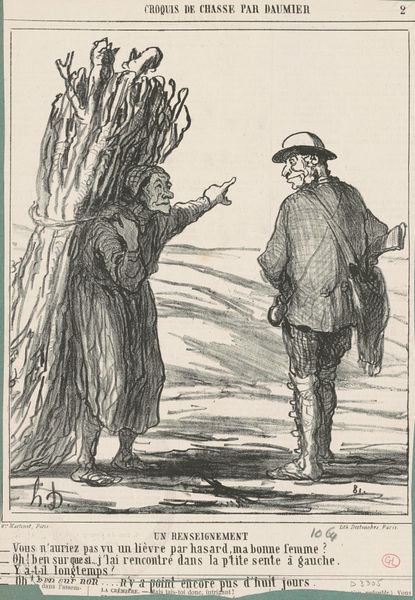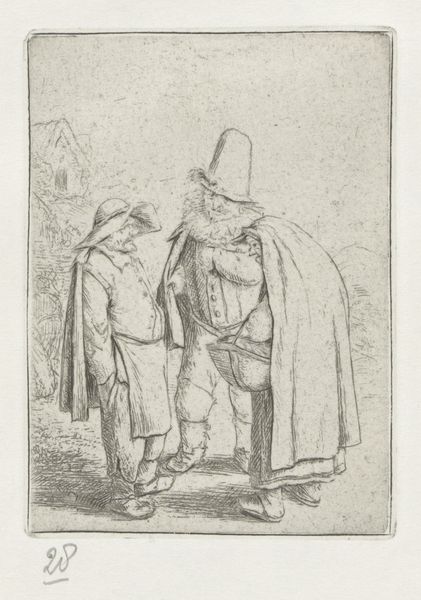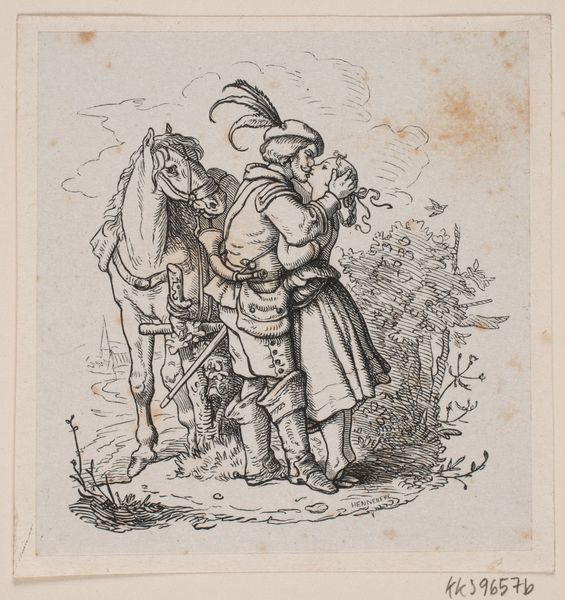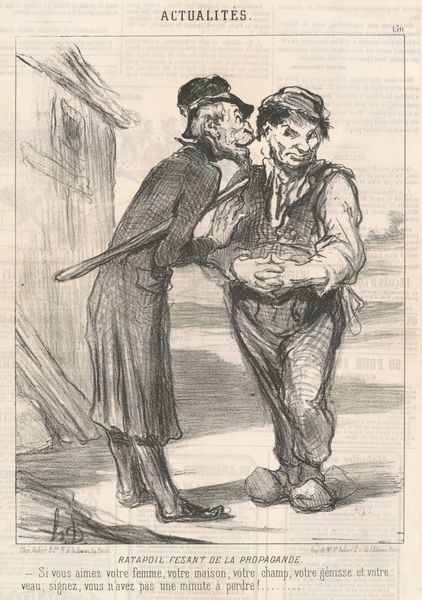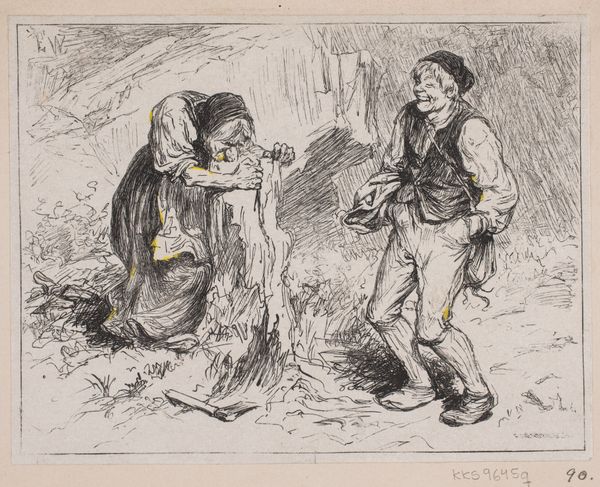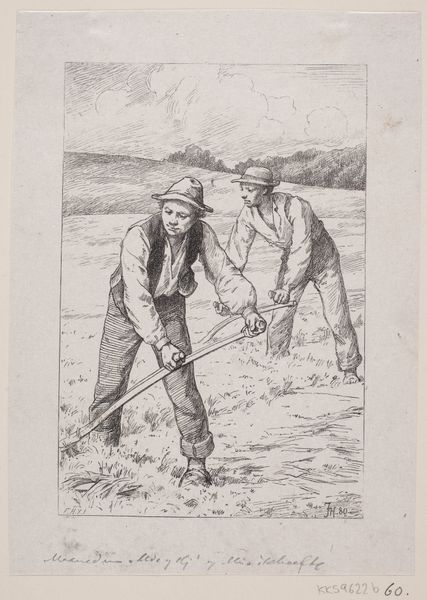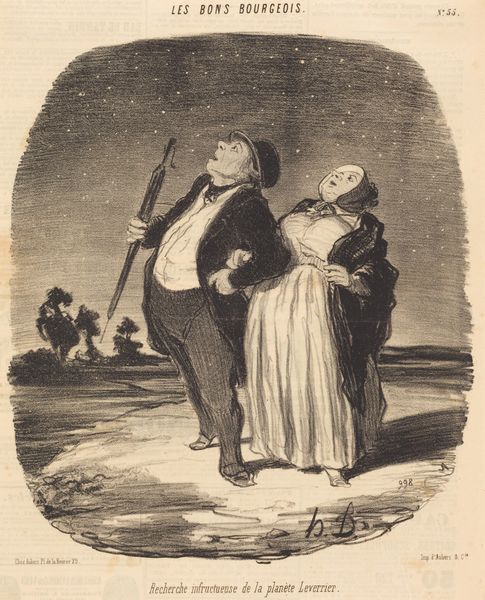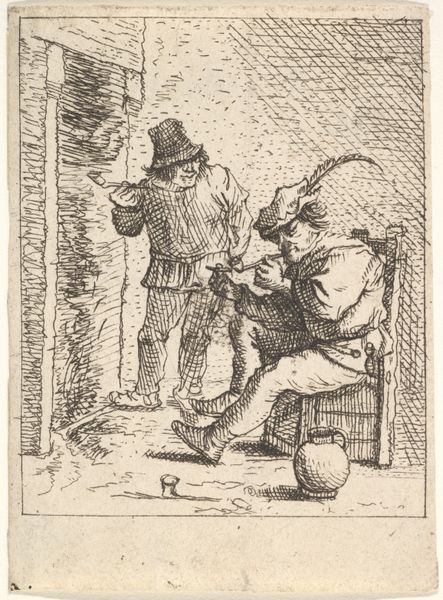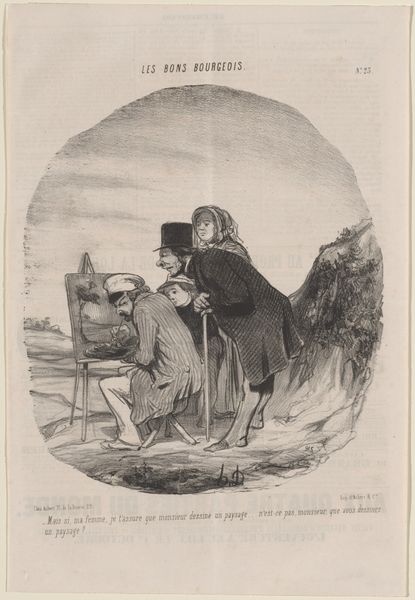
drawing, pen
#
drawing
#
pencil sketch
#
figuration
#
pen
#
genre-painting
#
watercolor
Dimensions: 101 mm (height) x 82 mm (width) (bladmaal)
Curator: Our attention is drawn to an intriguing sketch here entitled "Illustration til 'Herremandsbruden'," made sometime between 1870 and 1882. The artist, whose name escapes us, employed pen, pencil, and watercolor to bring this genre scene to life. Editor: It's so raw, so immediate. There’s a palpable energy to it, almost frenetic in its mark-making. And yet, the overall impression is charming, a slice of rustic life, perhaps. What strikes me is the texture evident even through these simple materials. Curator: Indeed, let’s consider those materials. The roughness of the pen and the faint touch of watercolor on what seems like inexpensive paper speak to the likely intended use of the sketch. It's not meant as a precious object but more likely served a practical function tied to the illustration of a book. This highlights how illustration held significant value as labor. Editor: Absolutely, the medium shapes the message, doesn't it? Knowing this accompanied a literary work sets the stage for the viewers engagement with public reception of imagery, genre painting and the role of such illustrations within larger socio-political narrative constructs during the late 19th century. What do you make of the two characters depicted? Curator: Their representation provides insight to class and gender roles from the period. Notice her stance with that rake compared to the stance of the gentrified man next to her. Perhaps their stances provide subtle narrative comment through their interactions or lack thereof. It speaks volumes. Editor: A critical engagement, even. A narrative isn’t only visual. The historical contexts of power, of patriarchy and of who illustrates these are critical, just like this work. We've brought together discussions about process, social structure and institutional intent to engage. It provides much. Curator: Agreed. By considering materials, purpose, and representation, it challenges the traditional art historical approach and lets this work to breathe again, for a modern public.
Comments
No comments
Be the first to comment and join the conversation on the ultimate creative platform.
